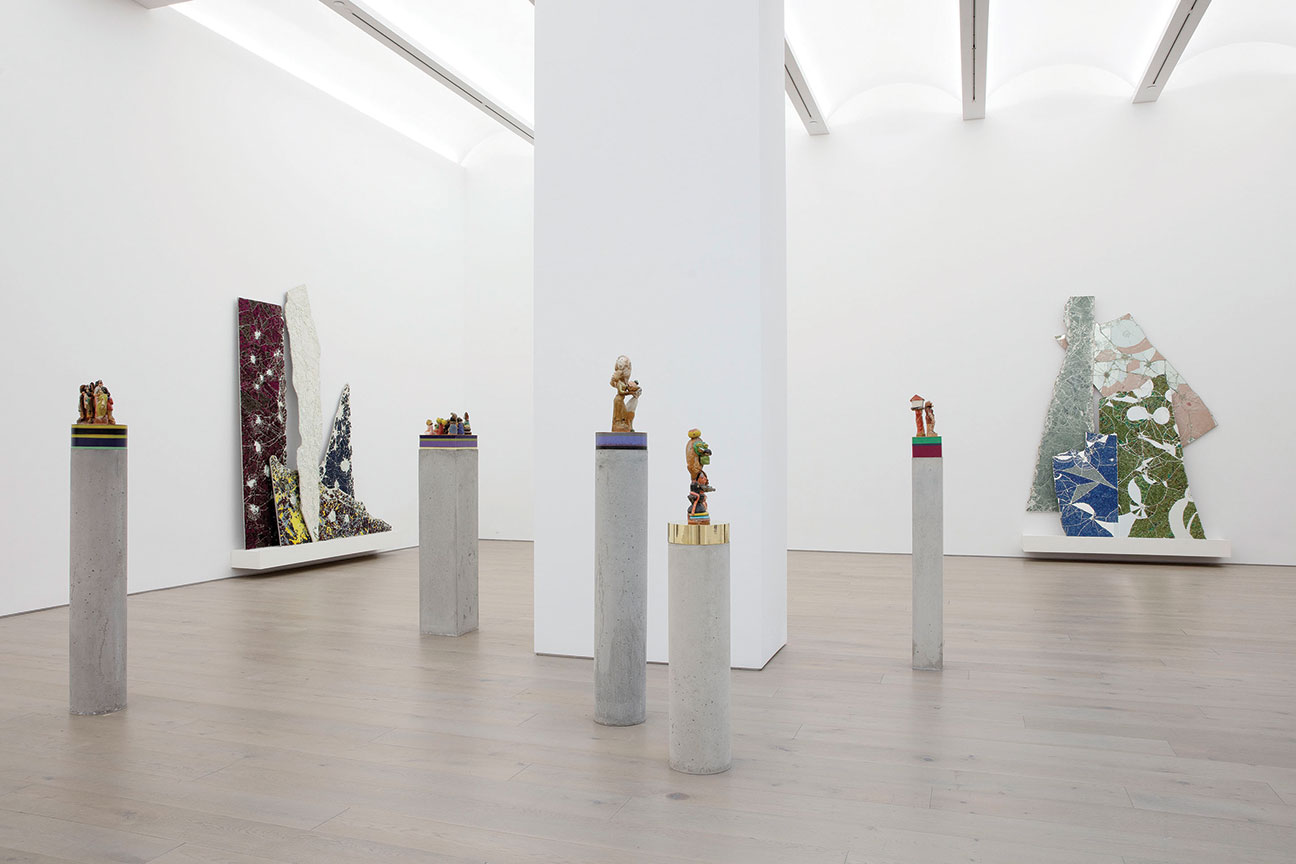« Reviews
Bharti Kher: The Unexpected Freedom of Chaos
Perrotin - New York
By Taliesin Thomas
In the Hindu tradition of ancient India, a pantheon of beloved gods, goddesses, and cosmic deities flourish in an ageless universe, where expressions of adoration and grace manifest by way of exciting mythological narratives and diverse symbolism. These glorious figures embody attributes in human and animal bodies and they are powerful reminders that our sensual life experience is to be celebrated. In harmony with her British-Indian heritage, the New Delhi based artist Bharti Kher (b. 1969) has consistently incorporated the lively lore and wild flair of traditional Indian and Hindu art through her art practice. Her recent solo exhibition “Bharti Kher: The Unexpected Freedom of Chaos” at Perrotin, NY brought together a series of small sculptures and abstract works. This show beautifully reflected her tendency to create individual pieces that communicate with each other across the axes of time and space.

Installation view of “Bharti Kher: The Unexpected Freedom of Chaos.” Courtesy of Perrotin, NY, 2020.
For many years Kher has employed the traditional Indian bindi as a primary material in her artworks (a bindi is a colored dot worn in the center of the forehead and considered the point at which creation begins, also representative of the mystical third eye). Her ritualistic use of bindistakes this simple material to another level, allowing it to function as a sacred medium, a polychrome surface, and a unique language. Included in this show were several sculptural works that expanded her use of the bindi into the realm of abstraction. In her piece titled The single white line that heard the future calling (2019), for example, the artist covered five asymmetrical broken mirror pieces with multicolored bindis, creating what looks like a jagged map of the heavens. Another piece titled Placebo Landscape (2019) is a rich harmony of white, green and blue bindis that radiate a calming energy, despite their irregular and dangerous edges. Each of these ‘mirror-bindi‘ works bursts with abundance, and together they embody a dimension of infinite possibilities.
Also featured in this show were clusters of small sculptures on round plinths. This motley grouping included representations of venerable Hindu beings such as Ardhanarishvara (2016), a striking character that is half male and half female. Referred to as Intermediaries, these brightly colored clay figurines are culled from Indian flea markets and refurbished and reconfigured by the artist. Another work from this series, Adoring audience (2019), features a small crowd of seated human figures, most of whose heads have been replaced with animals or fruits. Each mini sculpture conjures a story unto itself, bringing us closer to Kher’s affectionate manner of realizing aspects of Indian life into artistic vignettes that delight and amuse.
Kher’s art is full of graceful expressions and conceptual explorations of human and animal existence, ethnologic drama, tradition, race, gender, and intrinsic love. While the chaos of our reality endures, her work is a vibrant manifestation of the abiding myths of our collective human history. These tales inspire us to see the unexpected as an enchanted realm of imaginative freedom and fortuity.
(July 9 - August 10, 2020)
Taliesin Thomas is an artist-philosopher, writer, and lecturer based in Troy, NY (Hudson Valley). Since 2007 she is the simultaneously the founding director of AW Asia and collections manager of Art Issue Editions. Thomas has lectured widely on contemporary art and has published in Yishu: Journal of Contemporary Chinese Art, Journal of Contemporary Chinese Art (JCCA) and ArtAsiaPacific magazine in addition to regular reviews for ARTPULSE. She holds an M.A. from Columbia University and she is currently a Ph.D. candidate in Art Theory & Philosophy with IDSVA.
Filed Under: Reviews



































Leave a Reply
You must be logged in to post a comment.